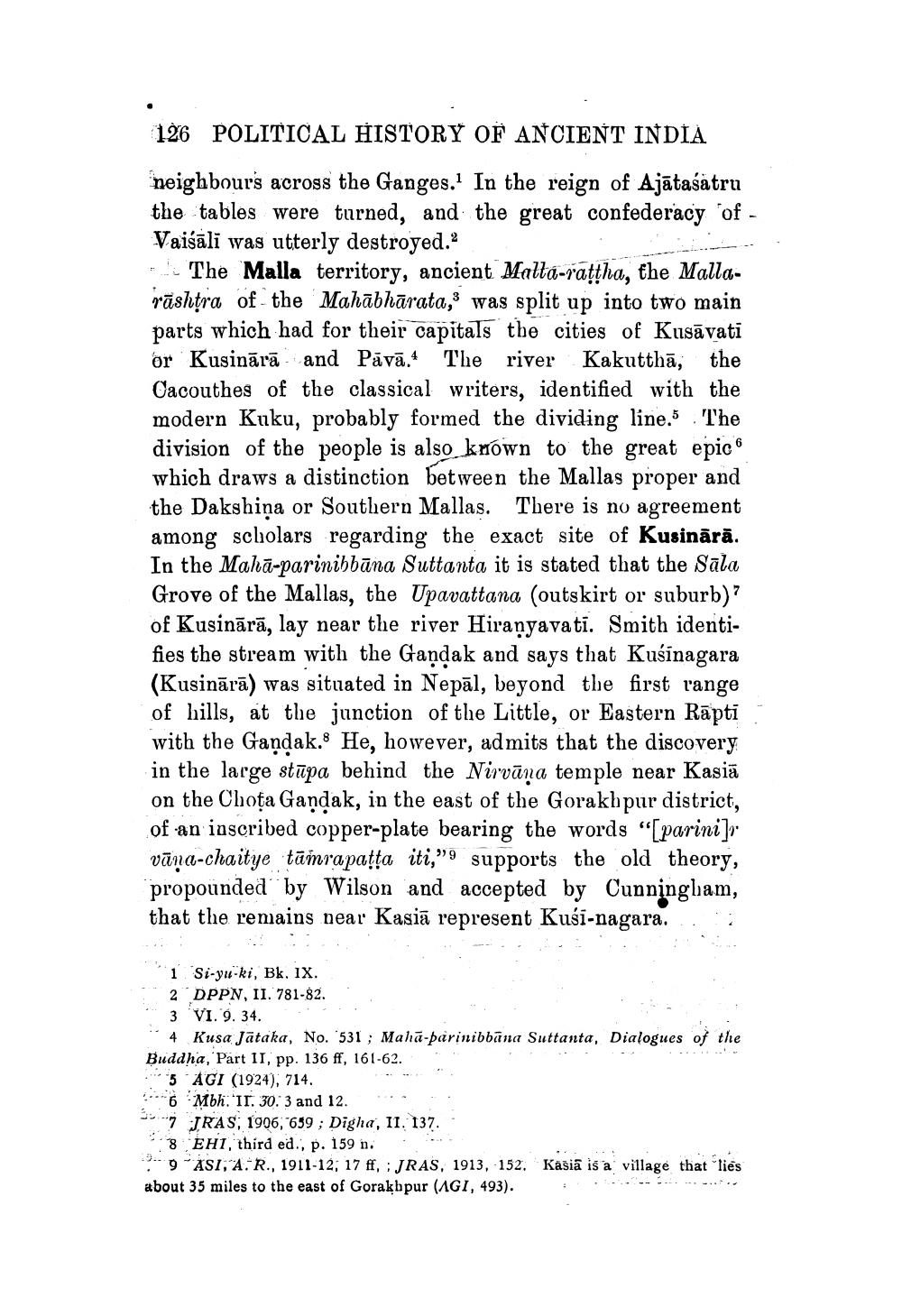________________
126 POLITICAL HISTORY OF ANCIENT INDÍA neighbours across the Ganges. In the reign of Ajātaśätru the tables were turned, and the great confederacy of - Vaiśālī was utterly destroyed. * The Malla territory, ancient Malta-rattha, the Mallarāshtra of the Mahābhārata, was split up into two main parts which had for their capitals the cities of Kusāvati or Kusinārā and Pāvā. The river Kakutthā, the Cacouthes of the classical writers, identified with the modern Kuku, probably formed the dividing line. The division of the people is also known to the great epic which draws a distinction between the Mallas proper and the Dakshina or Southern Mallas. There is no agreement among scholars regarding the exact site of Kusinārā. In the Mahā-parinibbūna Suttanta it is stated that the Sāla Grove of the Mallas, the Upavattana (outskirt or suburb)? of Kusinārā, lay near the river Hiranyavati. Smith identifies the stream with the Gandak and says that Kusinagara (Kusinārā) was situated in Nepāl, beyond the first range of hills, at the junction of the Little, or Eastern Rāpti with the Gandak. He, however, admits that the discovery in the large stūpa behind the Nirvāṇa temple near Kasiā on the Chota Gandak, in the east of the Gorakhpur district, of an inscribed copper-plate bearing the words "[parini]" vāna-chaitye tāmrapaļța iti,"9 supports the old theory, propounded by Wilson and accepted by Cunningham, that the remains near Kasiā represent Kuśi-nagara...
1 Si-yu-ki, Bk. IX. 2 DPPN, 11. 781-82.
3 VI. 9. 34. * 4 Kusa Jātaka, No. 531 ; Mahā-parinibbana Suttanta, Dialogues of the Buddha, Part II, pp. 136 ff, 161-62. *** *5AGI (1924), 714.
6 Mbh. 11. 30. 3 and 12. - JRAS; 1906, -659; Digha, II. 137. 5.8 EHI, third ed., p. 159 n.
9 ASI, A: R., 1911-12; 17 ff, ; JRAS, 1913, 152, Kasia is a village that lies about 35 miles to the east of Gorakhpur (WGI, 493).




